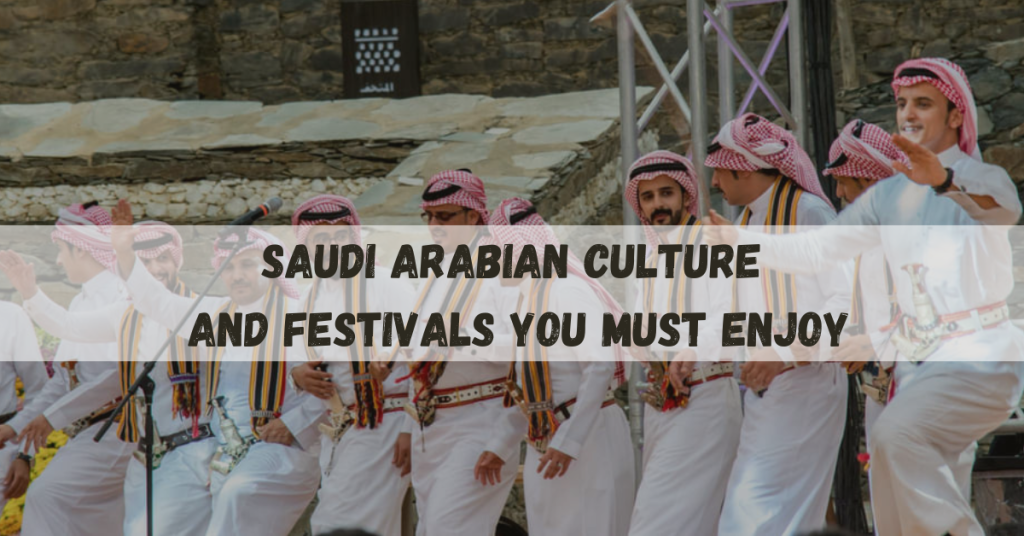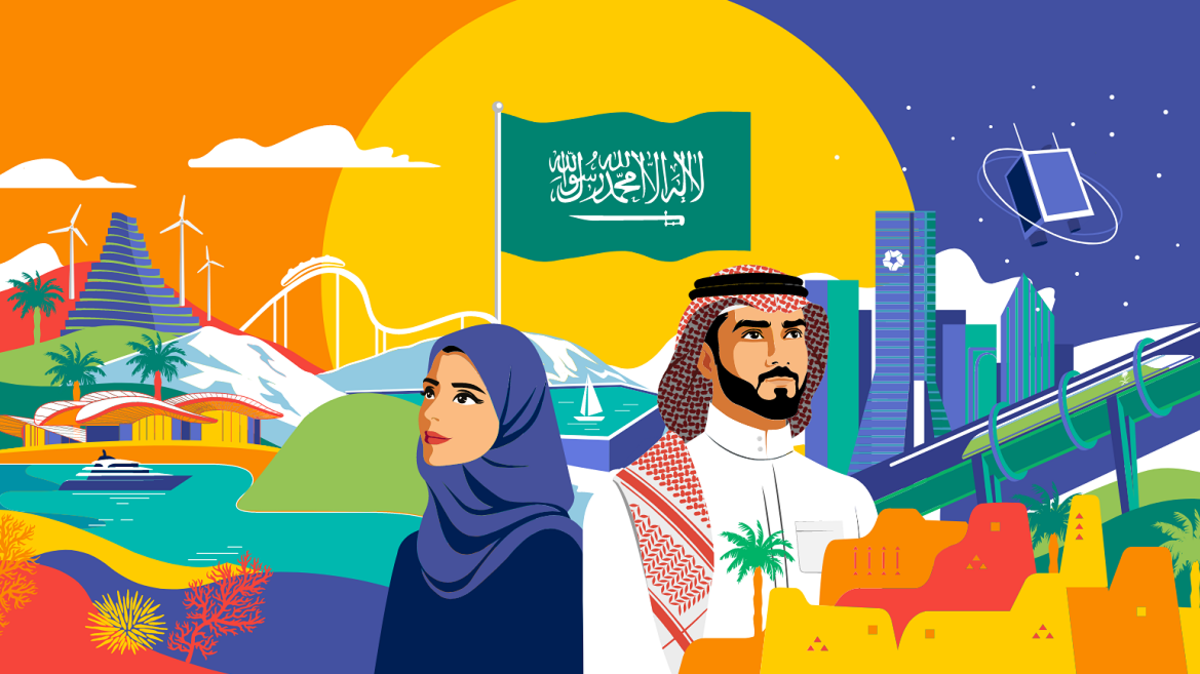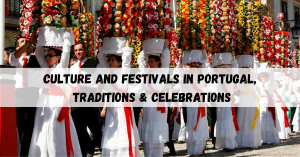Saudi Arabia is a country of deep-rooted traditions, rich cultural heritage, and vibrant celebrations. From Saudi Arabian hospitality and Majlis traditions to national festivals and religious customs, tourists can immerse themselves in authentic cultural experiences.
Whether attending the Riyadh Season entertainment festival, witnessing the Ardah dance, or enjoying a traditional Saudi Arabian meal, visitors will find that Saudi Arabian culture blends modernity with tradition. This guide explores Saudi Arabian festivals, etiquette, and cultural norms that travelers can experience.
Saudi Arabian Hospitality & Custom Etiquette
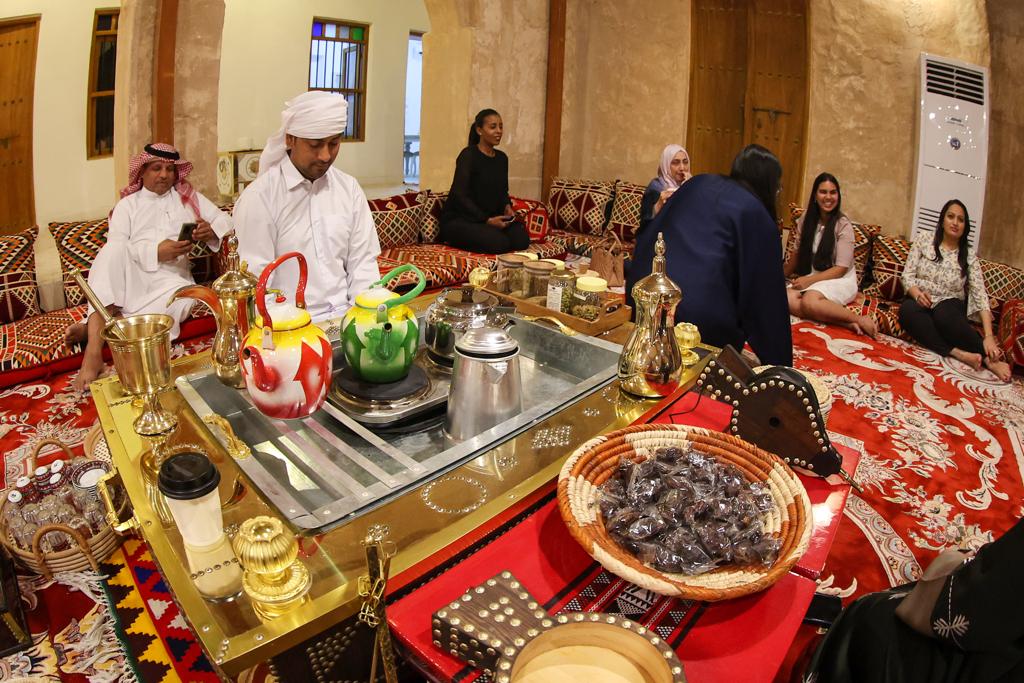
Hospitality is at the heart of Saudi Arabian culture, where guests are treated with warmth and generosity. Visitors are welcomed with Arabic coffee (Gahwa) and dates, a tradition symbolizing respect and friendship. In traditional homes, gatherings take place in a Majlis (guest room), where conversations flow over tea and sweets. Social etiquette in Saudi Arabia emphasizes greetings, modest dress, and respectful behavior, ensuring a culturally immersive experience for tourists.
The Importance of Hospitality in Saudi Arabian Culture
- Hospitality is a cornerstone of Saudi Arabian customs, with visitors welcomed warmly into homes and gatherings.
- Guests are often offered Arabic coffee (Gahwa) and dates, symbolizing friendship, generosity, and respect.
- Traditional seating in a Majlis (guest room) allows visitors to experience Saudi Arabian social norms and customs firsthand.
Arabic Coffee Culture & Majlis Traditions
- Gahwa (Arabic coffee) is brewed with cardamom and saffron, served in small cups with dates.
- The Saudi Majlis (gathering space) is a place where people socialize, discuss important matters, and enjoy traditional storytelling.
- It is customary to shake the coffee cup gently to indicate you’ve had enough.
Saudi Arabian Dress Code & Traditional Clothing
- Men commonly wear the Thobe (long white robe) and Shemagh (headscarf), while women wear the Abaya, often styled with modern touches.
- Tourists should dress modestly in public places, respecting Saudi Arabian social norms and customs.
- During festivals, men perform the Ardah dance in traditional attire, showcasing Saudi Arabian heritage.
Saudi Arabian Social Etiquette for Visitors
- Handshakes are common among men, while greetings between men and women should be approached with cultural awareness.
- Public displays of affection are discouraged as per Saudi Arabian social etiquette.
- Removing shoes before entering a home is a sign of respect in Saudi Arabian customs.
Saudi Arabian Festivals & National Celebrations
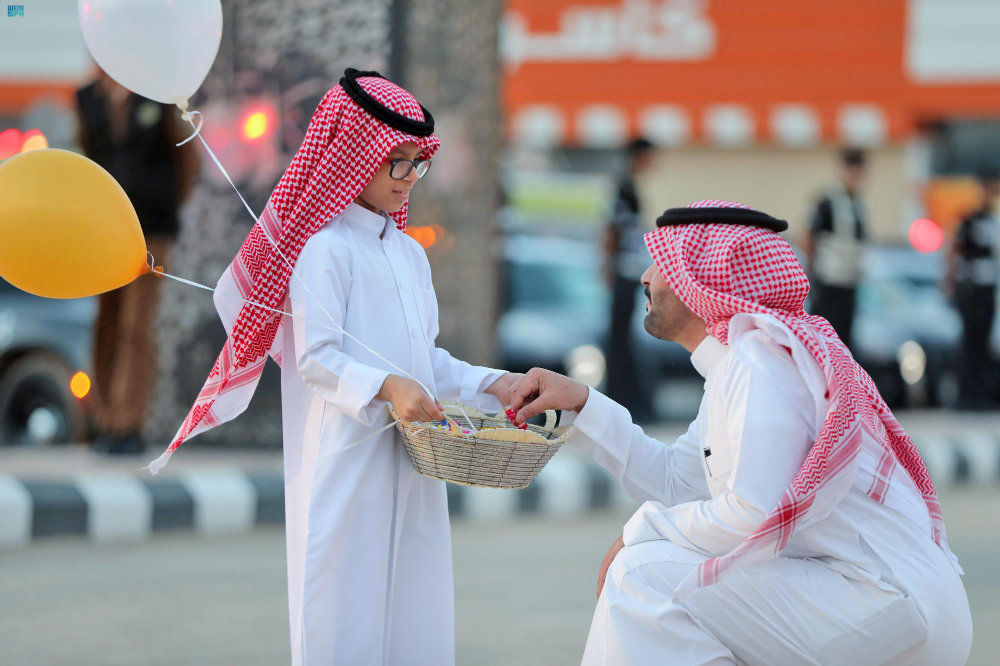
Saudi Arabia hosts vibrant cultural and religious festivals that showcase its rich heritage and national pride. Riyadh Season is a major entertainment festival featuring concerts, sports, and cultural events, while the Janadriyah Festival celebrates Saudi Arabian traditions, handicrafts, and camel racing. Religious events like Ramadan and Eid Al-Fitr bring families together for prayers, feasts, and gift-giving, offering visitors a chance to witness authentic Saudi Arabian customs and celebrations.
Riyadh Season: Saudi Arabia’s Largest Entertainment Festival
- Riyadh Season is one of the biggest Saudi Arabian festivals, featuring concerts, sports, cultural exhibitions, and global cuisines.
- Held in October to March, this event showcases modern Saudi Arabian culture and entertainment.
- Tourists can enjoy musical performances, fireworks, and interactive events.
Janadriyah Festival: A Celebration of Saudi Heritage
- Janadriyah Festival is the largest cultural event in Saudi Arabia, celebrating Saudi Arabian history, arts, and traditions.
- Visitors can witness camel races, falconry, traditional handicrafts, and the Ardah sword dance.
- The festival promotes Saudi Arabian cultural heritage and traditional values.
Ramadan & Eid Celebrations in Saudi Arabia
- Ramadan is the holiest month in Saudi Arabia, marked by fasting, prayer, and nightly feasts (Iftar).
- Eid Al-Fitr and Eid Al-Adha are Saudi Arabian religious celebrations filled with family gatherings, feasts, and gift-giving.
- Tourists can enjoy local desserts like Maamoul (date-filled cookies) and special Eid feasts.
National Day: Celebrating Saudi Arabian Identity
- Saudi National Day (September 23) is a day of patriotism, fireworks, and cultural performances.
- Landmarks across the country light up in green, symbolizing national pride.
- Tourists can experience parades, traditional music, and community celebrations.
Taif Rose Festival: A Fragrant Cultural Experience
- Held in spring (March–April), the Taif Rose Festival celebrates the blooming of fragrant Taif roses.
- Visitors can see rose distillation processes and buy locally made perfumes and rosewater.
- The festival showcases Saudi Arabian craftsmanship and natural beauty.
Saudi Arabian Traditional Music & Dance
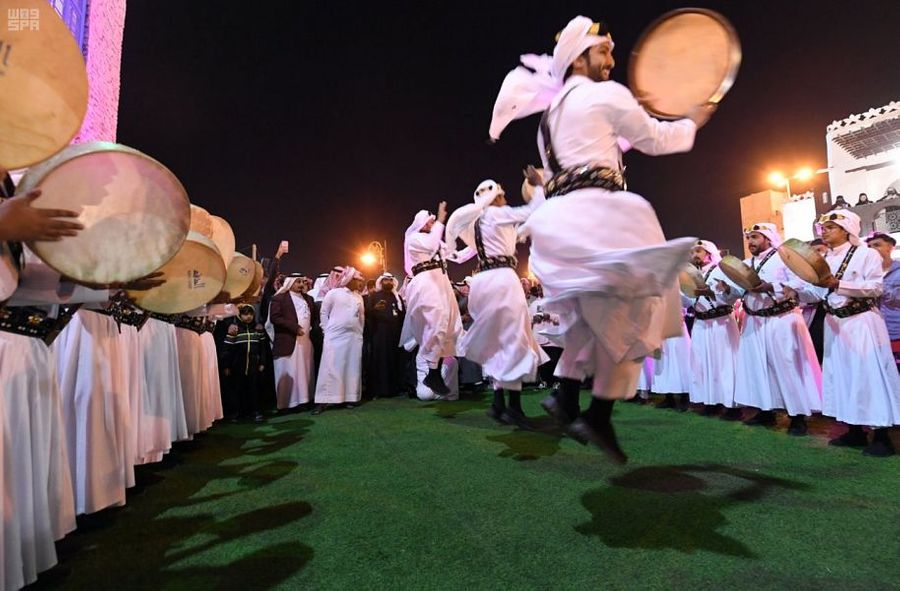
Music and dance play an essential role in Saudi Arabian culture, with performances seen at festivals, weddings, and national events. The Ardah sword dance, performed by men in traditional Saudi Arabian clothing, is a symbol of national pride, featuring rhythmic drumbeats and poetry. In the Hijaz region, Mizmar folk music is popular, bringing lively drumming and group dancing to social gatherings and celebrations. These traditional art forms offer tourists a glimpse into the heritage and cultural identity of Saudi Arabia.
The Ardah Dance: A Symbol of Saudi Arabian Heritage
- The Ardah sword dance is performed at national festivals, weddings, and royal events.
- Dancers wear traditional Saudi Arabian clothing, moving in rhythmic steps to the sound of drums and poetry.
- Visitors can witness this powerful display of cultural pride during Saudi Arabian celebrations.
Mizmar: Traditional Hijazi Folk Music
- Mizmar is a traditional dance and music style from Western Saudi Arabia, popular in Jeddah and Mecca.
- It features fast-paced drumming and group dances, often performed at weddings and social events.
- Tourists can experience Mizmar at cultural festivals and heritage villages.
Samri: A Traditional Bedouin Dance and Music Form
- Cultural Significance: Samri is a traditional Bedouin dance and music form from the Najd region, performed at weddings, national celebrations, and cultural events.
- Performance Style: It features poetry recitation, rhythmic drumming, synchronized clapping, and group singing, creating a lively atmosphere.
- Traditional Attire: Performers wear traditional Saudi Arabian clothing, including white thobes and red or white shemaghs (headscarves).
- Where to Experience It: Tourists can watch Samri performances at heritage festivals, special celebrations, and cultural events like the Janadriyah Festival.
- Symbol of Storytelling: Samri is a form of oral storytelling, preserving Saudi Arabian history and traditions through music and poetry.
Best Time to Experience Saudi Arabian Culture, Etiquette & Festivals
| Experience | Best Time to Visit | Why? |
|---|---|---|
| Saudi Arabian Hospitality & Majlis | Year-round | Guests are always welcomed with Arabic coffee, dates, and cultural traditions. |
| Riyadh Season Festival | October – March | Saudi Arabia’s biggest entertainment festival, featuring concerts, sports, and cultural events. |
| Janadriyah Festival | February | the largest celebration of Saudi Arabian heritage, showcasing camel races, traditional crafts, and folk music. |
| Ramadan & Eid Celebrations | Varies (Islamic Calendar) | Experience religious customs, Iftar feasts, and Eid traditions, with festive gatherings and charity events. |
| Saudi National Day | September 23 | Witness patriotic parades, cultural performances, and fireworks celebrating Saudi Arabian identity. |
| Taif Rose Festival | March – April | See the blooming of Taif roses, traditional rose distillation, and perfume-making. |
| Samri | Year-round (at festivals & weddings) | A Najdi folk dance and music tradition, featuring poetry, rhythmic drumming, and synchronized clapping. Best seen at weddings, Janadriyah Festival, and cultural gatherings. |
Saudi Arabia offers a blend of heritage, hospitality, and modern celebrations, making it a top cultural destination. Whether enjoying Saudi Arabian etiquette, vibrant festivals, or traditional dance, visitors will find authentic cultural experiences in Saudi Arabia that make their journey unforgettable.
FAQs
1. What are the most famous festivals in Saudi Arabia?
The biggest Saudi Arabian festivals include Riyadh Season, Janadriyah Festival, Ramadan, Eid Al-Fitr, and National Day, featuring cultural events, traditional Saudi Arabian performances, entertainment shows, and heritage exhibitions. These festivals showcase Saudi Arabian customs, hospitality, and rich history, making them a must-see for visitors.
2. What are the key social etiquette rules in Saudi Arabia?
Visitors should greet respectfully, dress modestly, and follow Saudi Arabian cultural norms. Key etiquette rules include accepting Arabic coffee (Gahwa) as a gesture of hospitality, eating with the right hand, and avoiding public displays of affection. When visiting souks, mosques, or traditional Majlis gatherings, it’s important to be mindful of Saudi Arabian social customs and traditions.
3. Where can tourists experience traditional Saudi Arabian culture?
Tourists can explore UNESCO heritage sites, historical souks, Majlis gatherings, and cultural festivals to experience authentic Saudi Arabian hospitality and traditions. Events like Janadriyah Festival and Taif Rose Festival allow visitors to see traditional Saudi Arabian clothing, music, dance performances, and handicrafts, while old markets in Jeddah and Riyadh offer insights into Saudi Arabian daily life and customs.
4. What traditional dances and music can visitors see in Saudi Arabia?
The Ardah sword dance, performed at Saudi Arabian national events, weddings, and royal gatherings, is a symbol of Saudi Arabian heritage and Bedouin warrior traditions. Mizmar folk music, popular in the Hijaz region, features fast-paced drumming and group dances, while Samri performances from the Najd region involve poetry, rhythmic clapping, and traditional singing. These performances are commonly seen at Saudi Arabian cultural festivals.
5. When is the best time to visit Saudi Arabia for cultural experiences?
The best time to visit Saudi Arabia for cultural tourism is October to April, when the weather is cooler and ideal for Saudi Arabian national festivals, traditional events, and outdoor heritage celebrations. Major events like Riyadh Season, Janadriyah Festival, and Saudi National Day take place during this period, allowing tourists to experience Saudi Arabian customs, celebrations, and cultural performances.
